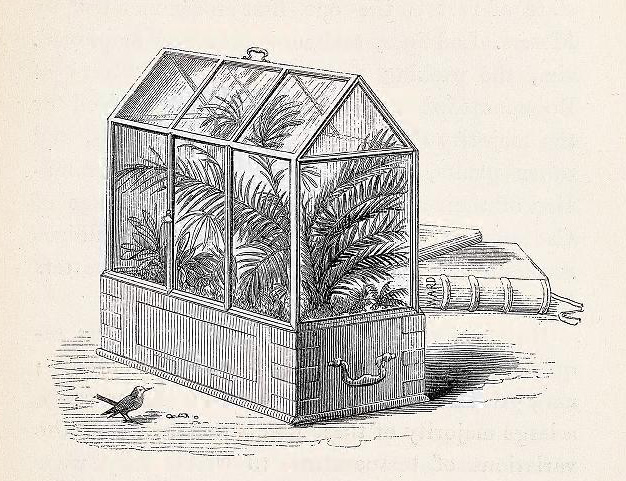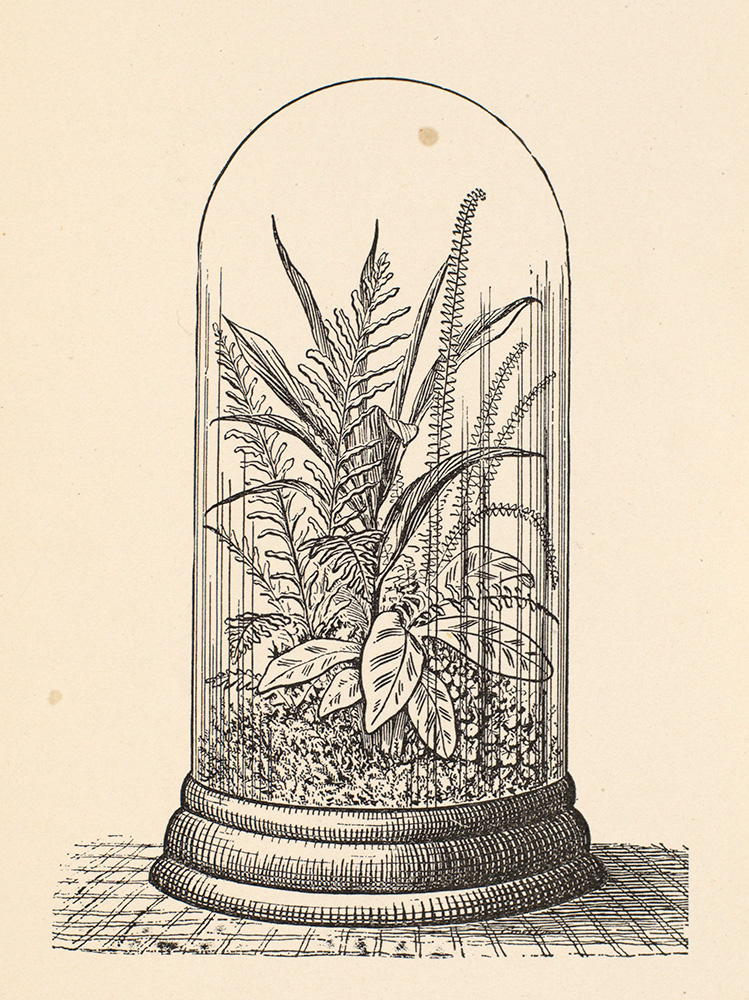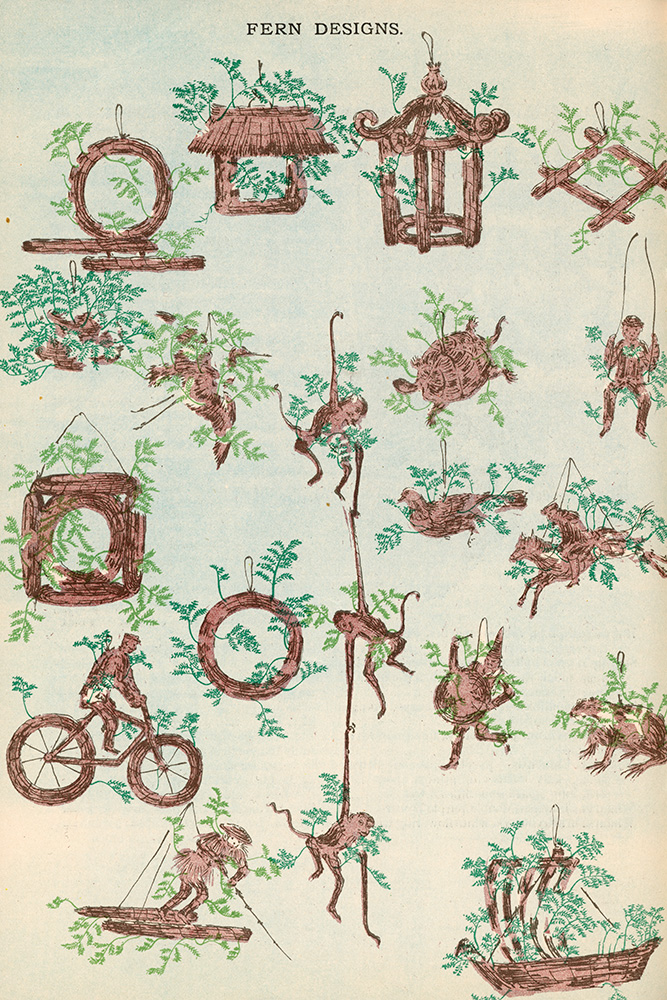Insights into our collections
Pteridomania: The Victorian Obsession with Ferns
Why were the Victorians so fascinated with ferns? From dinosaurs to Wardian cases and custard creams, read on to find out more.
In the mid-19th century, Britain was swept up in a botanical craze for the humble fern. So widespread and intense was this fascination that the author Charles Kingsley coined a term for it in 1855: “Pteridomania” or fern madness.
Ancient Origins: Ferns Before the Dinosaurs
Ferns are among the oldest plants on Earth, first appearing around 360 million years ago, long before the dinosaurs. Fossil evidence shows they flourished across the globe, from the Arctic islands of Spitsbergen to Antarctica. Some were tree-like, others epiphytic (living on another plant), winding or climbing. They fed herbivorous dinosaurs like Stegosaurus and Diplodocus and were among the dominant ground-layer plants of the prehistoric world.
,_plate_XVI,_opposite_210_-_BL.jpg)
Illustration of a pterodactyl by Édouard Riou from The World before the Deluge (1865) by Louis Figuier.
From Medicinal Marvel to Botanical Mystery
Historically, ferns were used in medicine by the ancient Greeks to treat ailments ranging from asthma to kidney complaints. Their lack of flowers or seeds led to myths about invisible “fern seeds” that could render one invisible. It wasn’t until the late-18th century that scientists discovered that ferns reproduced via spores, opening the door to widespread cultivation.
The Wardian Case and the Rise of the Fern Collector
The – a sealed glass container that protected plants and allowed them to stay alive with very little watering – revolutionised indoor gardening and plant transport. Ferns, which had previously been difficult to cultivate, now thrived in drawing rooms and on long sea voyages. As Britain’s empire expanded, so too did access to plant species, and gardening became a fashionable pursuit for the middle classes.

Illustration of a Wardian case, from Nathaniel Ward, On the growth of plants in closely glazed cases, 1852 (2nd edition)
Women and the Fern Craze
Victorian society considered botany to be a respectable pastime for middle-class women, at a time when few intellectually stimulating pursuits were open to them. Books such as British Ferns by Phoebe Lankester and Shirley Hibberd’s The Fern Garden, brought fern growing to a broader audience with their accessible combination of technical detail with engaging prose, where collectors would venture far and wide in pursuit of rare specimens.
The Architecture of Obsession: Fern Displays
For the wealthiest fern enthusiasts, collecting was only the beginning. Displaying ferns became an art form. Elaborate ferneries—dedicated glasshouses, grottos, or garden rooms—were constructed to showcase prized specimens. These spaces often featured rockeries, water features, and carefully curated lighting to mimic the ferns’ natural habitat.
Indoors, the Wardian Case evolved into ornate terrariums, some incorporating aquariums or revolving mechanisms. These miniature greenhouses became fashionable centrepieces in Victorian parlours. In his 1877 book The New Practical Window Gardener, John Mollison declared that “no home was complete without a fern under glass”.
Illustration of a fernery from Ferns in their Homes and Ours (1878)
Ferns in Everyday Life
At the peak of Pteridomania, ferns crept into every corner of Victorian life— they appeared on wallpaper, clothing, ceramics, jewellery, furniture, and even gravestones. Some even believe that custard cream biscuits owe their curly decoration to fern fronds – though this is contested as custard creams were not invented until the early 20th century.
A Legacy That Lives On
Though the craze eventually faded, its legacy endures. The Glasshouse at RHS Garden Wisley still houses ancient ferns like Angiopteris evecta the King Fern, believed to have the largest frond in the world. The RHS Lindley Library is a treasure trove for anyone curious about the topic. As well as numerous books on ferns printed at the height of pteridomania, the collection also contains catalogues from the plant nurseries that capitalised upon the craze, as well as photographs and illustrations of all manner of elaborate fern displays.
Catalogue of ferns, published by W. & J. Birkenhead fern nursery, 1887.
Discover more
Author
RHS Libraries Team, RHS Lindley Library
Published
22 May 2025
Insight type
Short read
![Drawing showing a woman walking through a rock arch, from James Pulham ‘Picturesque ferneries, and rock-garden scenery, in waterfalls, rocky-streams, cascades, dropping wells, heatheries, caves or cavernous recesses for boathouses, &c. &c.’ (London, [c.1877]).](../../../pages/28/content/46823_0016.jpg)


